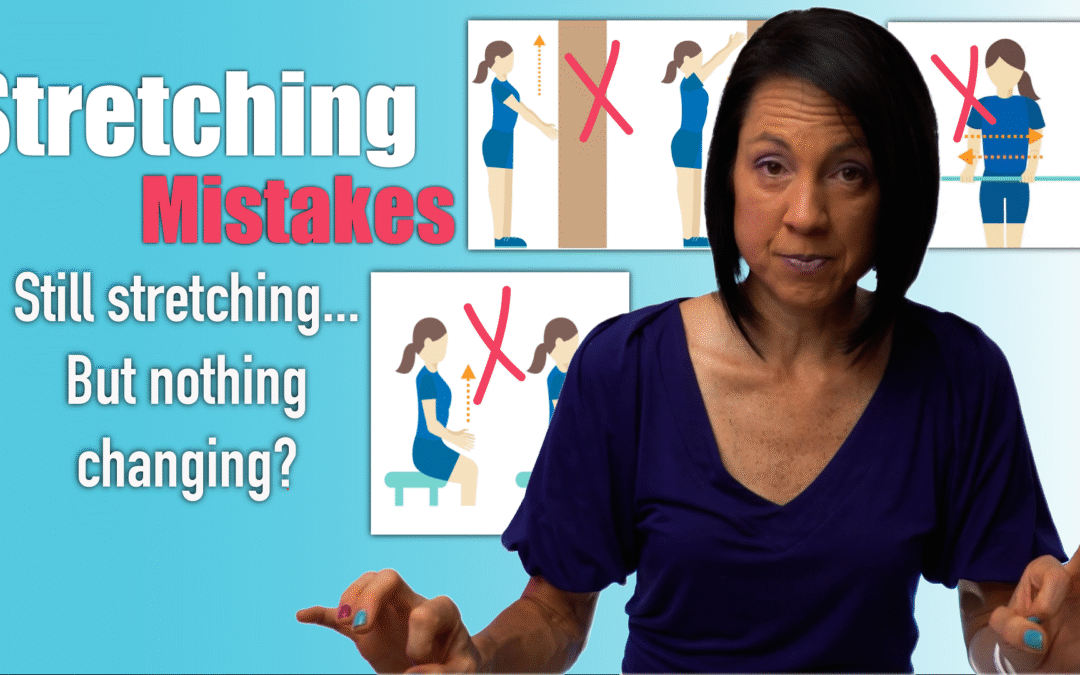8 Common Stretching Mistakes in Stroke Recovery
Why Your Stretching Might Be Making Spasticity Worse
If you’re dealing with spasticity after a neurologic injury, stretching might not be as straightforward as it seems. In fact, doing it the wrong way can increase resistance, worsen symptoms, and set your progress back.
Spasticity vs. Tightness: Know the Difference
One of the most common misconceptions is treating spasticity like muscle tightness. Spasticity is an involuntary muscle contraction due to a loss of connection with parts of the brain that help to inhibit overactive movements. While a tight muscle simply needs lengthening, a spastic muscle resists lengthening and often contracts more with speed or stimulation. That’s why standard stretching techniques don’t always work.
The 8 Stretching Mistakes to Avoid
- Prolonged Holds Without Movement
Long static holds may help tight muscles but not spastic ones. Instead, incorporate slow, rhythmic movements to help desensitize the muscle. - Stretching Too Fast
Spasticity is velocity-dependent, which means the faster you stretch, the worse it gets. Go slow, always. - Only Stretching Once a Day
Even 30 minutes of stretching isn’t enough if the muscle contracts involuntarily the rest of the day. Wearing a properly fitted splint can help maintain gains. Most off-the-shelf splints aren’t strong enough to resist spastic contractions. Use one designed for neurologic conditions, or you can order our Rehab HQ hand brace. - Stretching in the Wrong Position
Stretching in unsupported or upright positions may trigger more resistance. Support the arm or lie down to reduce stimulation. - High-Stimulation Environments
Noisy, bright, or stressful environments increase spasticity. Do your stretching in a calm, quiet, low-stimulation space. - Lack of Active Engagement
Combine passive stretches with active-assisted or antagonist muscle activation to promote balance and relaxation. - Skipping Weight-Bearing Stretches
Weight-bearing (e.g., standing calf stretches or resting your forearm on a table) can reduce spasticity more effectively than sitting. - Engage Your Brain
Don’t mentally check out. Engaging your brain during stretching by mentally focusing on relaxing the muscle can help with inhibition and improve results over time.
Final Thoughts
Stretching spastic muscles requires more than just time and effort, it demands the right strategy. By avoiding these common mistakes and using techniques tailored for spasticity, you can reduce resistance, improve muscle control, and make your stretching routine more effective.
Consistency, proper positioning, and staying mentally engaged are key. With the right tools and guidance, you can take meaningful steps toward better mobility and recovery.
Tools to Supercharge Your Recovery
Want a comprehensive rehab plan without bouncing between therapists or feeling lost?
Our Gold Membership Program includes:
- Ad free videos and handouts
-
Full access to 350+ home rehab exercise videos
-
Monthly Q&A sessions and webinars
-
A private discussion board I check daily
👉 Learn more at Rehab HQ
📞 Or schedule a discovery call to find out if it’s right for you.
🖐 Rehab HQ Hand Brace Ordering Form
🟦 ShoulderFlex (Blue Shoulder Stretching Tool)
Articles you may be interested in
Why Plyometrics Matter After Stroke (Even if They Sound Scary)
Why Plyometrics Matter After Stroke (Even if They Sound Scary) Let’s start with the obvious: The word "plyometrics" sounds like something reserved for athletes, not stroke survivors.But stay with me—because if you’re in the later stages of recovery, this could be the...
Stages of Motor Learning Post Stroke
Why Everything Feels So Hard (and What That Actually Means for Your Recovery) If you have ever said: “Why is this so hard?” “I could do this yesterday—why not today?” “Why can’t I remember how to move?” You are not alone. If you’ve had a stroke and you're in rehab,...
Blocked, Random, or Distributed? How to Choose the Right Practice Schedule in Stroke Recovery
Blocked, Random, or Distributed? How to Choose the Right Practice Schedule in Stroke Recovery Let’s talk about one of the most overlooked pieces of stroke recovery: How you practice. Not what…Not how long…But how the practice is structured. Because believe it or not,...
You have just had a stroke. Now what?
You’ve Just Had a Stroke. Now What? Acute Phase Recovery Guide – What to Expect in the First Few Days First Things First… If you’re here, you or someone you love has likely just had a stroke. Let’s pause for a moment and say what most people won’t: This is...
Gravity Matters: How to Use It (or Remove It) in Stroke Recovery
Gravity Matters: How to Use It (or Remove It) in Stroke Recovery When I say "use gravity to your advantage"… what I really mean is: be strategic. One of the biggest mistakes I see in rehab (especially home programs) is doing exercises that are technically correct—but...
Use Synergy Patterns Sparingly (and Here’s Why That Matters)
Let’s talk about something that shows up in nearly every stroke recovery journey: synergy patterns. You might not know them by name. But if you’ve ever noticed your arm “wants” to move in one big sweeping motion (instead of just lifting your hand)… or if your leg...
Best Arm Rehab Post Stroke
Discover how new research is changing what’s possible for stroke survivors with little to no arm movement. https://youtu.be/Bw-rd1Fx02cWhat if I told you that even if you can’t move your arm after a stroke, there are still powerful ways to promote recovery—and...
Food Is Fuel—and Medicine: Why Nutrition Shapes Your Recovery
What you eat might be the most powerful rehab tool you're not using. Nutrition isn’t just about weight or willpower. It’s not about which diet is trending this year. And it’s definitely not about perfection. It’s about function. And when your brain is trying to heal,...
Stroke Recovery Essentials: 4 Non Negotiables For Brain Healing
We talk a lot about exercises in stroke recovery. But here’s the truth: recovery doesn’t start with movement—it starts with oxygen. When a stroke cuts off blood flow, your brain enters a chemical storm. Inflammation surges. Oxidative stress damages neurons. The...
When Your Brain Forgets Half the World: Understanding Hemispatial Neglect
When Your Brain Forgets Half the World A practical guide to hemispatial neglect after stroke Let’s talk about something that doesn’t get nearly enough attention—literally. It’s called hemispatial neglect.And if you’re dealing with it, you already know how frustrating,...














